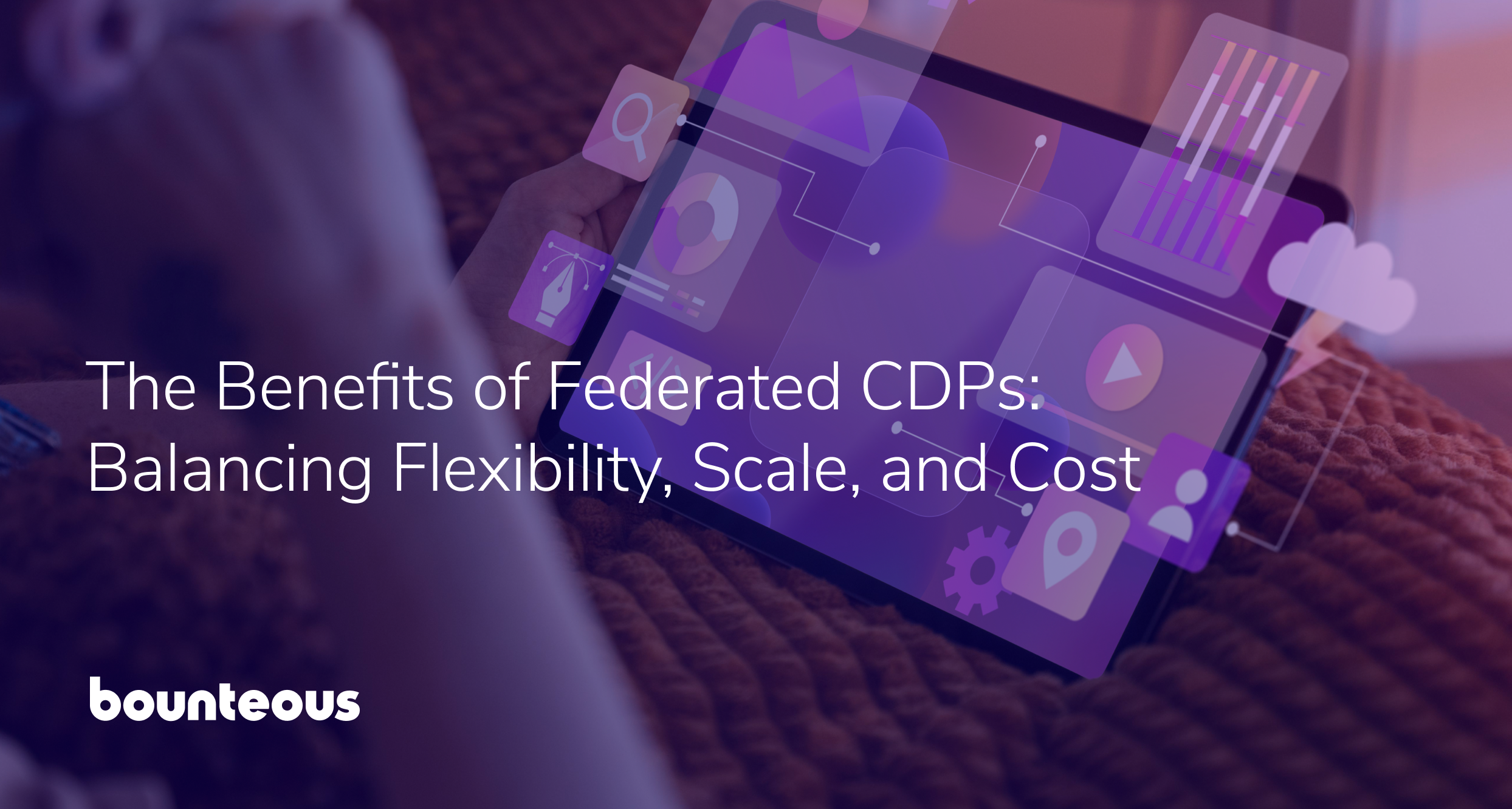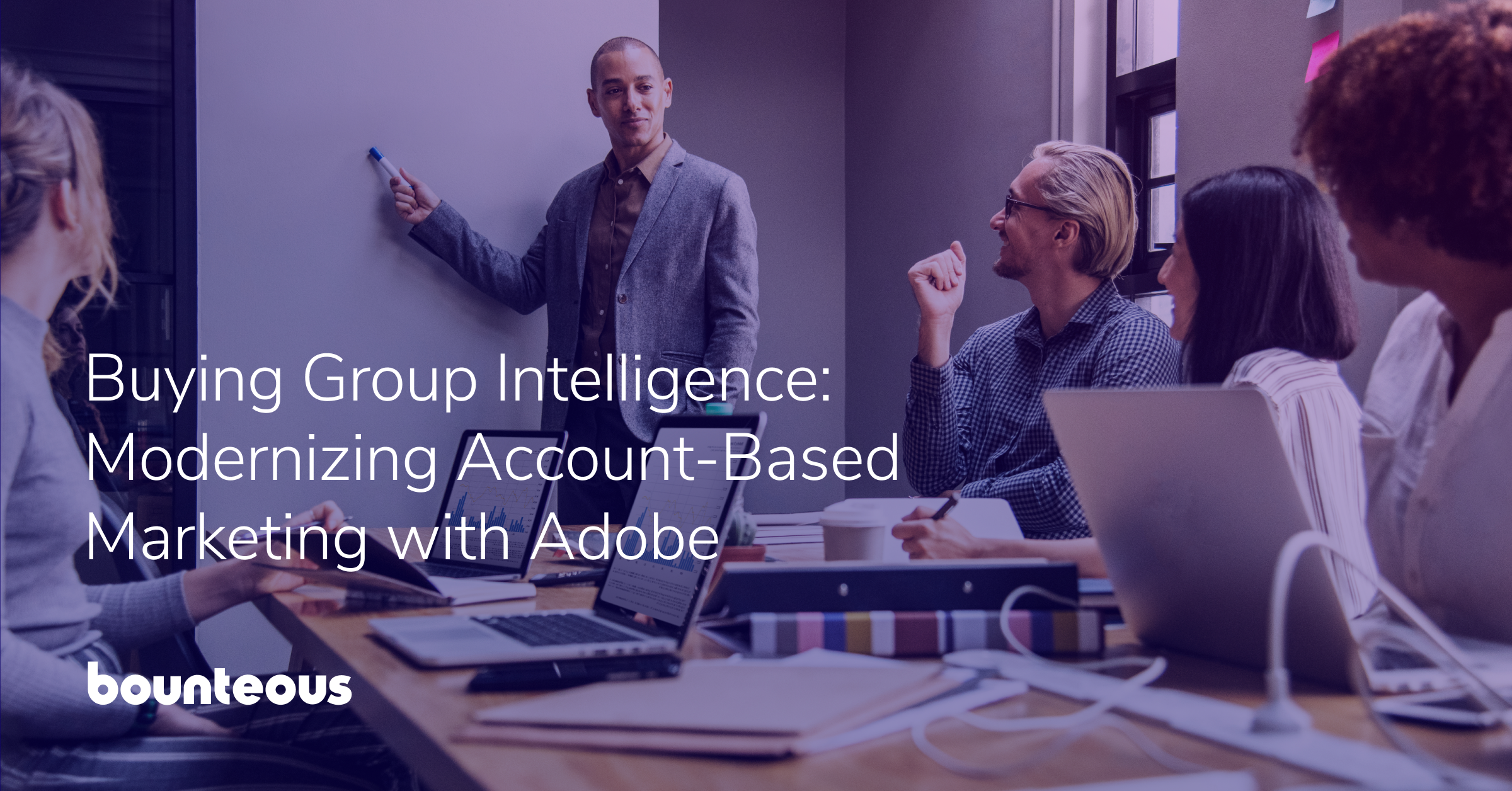The Benefits of Federated CDPs: Balancing Flexibility, Scale, and Cost

In recent months, we’ve noticed that conversations with clients around Federated Customer Data Platforms (CDPs) have intensified, particularly in highly regulated industries such as healthcare and financial services. Many enterprises are rethinking how they structure and access customer data, and the tradeoffs between copying data into a Customer Data Platform (CDP) versus federating it from an existing data warehouse are top of mind.
At Bounteous, we regularly advise clients on these decisions, helping them weigh cost, governance, and performance considerations against their customer experience ambitions. Because no two organizations have the same technology stack, use cases, or data maturity, the “right” approach is rarely one-size-fits-all. Our role is to guide enterprises through the complexity, identifying where federation can create efficiency, where ingestion is necessary for reliability, and how the two can work together to drive business outcomes.
What Is a Federated CDP?
A federated CDP is designed to query and activate data without requiring that every piece of information be physically moved into the CDP itself. Rather than duplicating data, federation works by creating a virtual database that links to external systems, such as an enterprise data warehouse, through metadata. This allows the CDP to run queries directly against the source of truth, reducing redundancy and accelerating access to information.
The appeal is clear: less duplication of sensitive data, lower storage and ingestion costs, and immediate alignment with the freshest version of the truth. At the same time, federation can provide agility for niche use cases, such as analyzing historical transactions or enriching campaigns with attributes that aren’t required in day-to-day customer profile management.
Zero Copy vs. Federation: Untangling the Buzzwords
Another concept often raised in this debate is “Zero Copy.” In theory, zero copy means leaving all customer data in place, whether in a cloud or warehouse, and building or activating audiences without ever duplicating it into the CDP. It suggests a future where marketers and analysts can seamlessly tap into enterprise-scale datasets without additional storage, sync processes, or latency.
In practice, however, the promise of zero copy is rarely absolute. While much of the data may remain in the warehouse for querying and segmentation, some portions usually must still be transferred to activation systems to power marketing campaigns or real-time decisioning. In other words, the “zero” in zero copy tends to be more aspirational than literal.
Federation offers a pragmatic path forward. Many CDPs are evolving toward a hybrid model that combines both strategies: critical, high-velocity data is ingested into the platform to support always-on personalization and operational stability, while less frequently used or specialized datasets are federated. This approach strikes a balance between efficiency and reliability, enabling organizations to minimize duplication where it doesn’t add value, without compromising performance where speed and availability are non-negotiable.
The Challenges of Federation
Cost Concerns
Despite its advantages, federation is not without hurdles. One of the most common concerns is the impact on the enterprise data warehouse cost and performance. Some organizations are reluctant to allow frequent or complex queries against these systems, worried about cost, performance, or governance implications. From a cost perspective, there is a complex optimization problem among storage, compute, and egress costs between the data warehouse and CDP, often with cost models between platforms that do not easily compare to one another, so it’s hard to understand the most efficient allocation of platform costs.
Real-Time Limitations
The collection and activation of data in real-time or near-real-time is also a consideration. Federated approaches tend to be best suited for batch-driven or scheduled processes, rather than real-time use cases where speed is critical. Many data warehouse architectures haven’t been set up with web-scale, real-time interaction data in mind, or low-latency streaming outputs to channel destination platforms. Organizations evaluating federation must carefully weigh which data is appropriate to leave in a data warehouse and which should be copied into a CDP capable of real-time data collection and activation to ensure operational smoothness.
Team Alignment
And finally, a federated approach requires tight alignment between marketing and IT teams within an organization. Federation represents a highly interdependent relationship between the data warehouse and CDP, and a tradeoff of both business and technical objectives, processes, and costs, which means these teams need to move together with a mutual understanding of goals.
When Federation Works Best
From our experience, federation proves most valuable in selective, well-defined scenarios. It can be particularly effective for tapping into historical data without permanently ingesting it, enriching campaigns with a few additional attributes to elevate personalization, or supporting one-time activations such as a limited campaign or seasonal offer. It’s also a common solution for regulated or sensitive data where there are uses for such data in segmentation and personalization but there are privacy or security concerns on copying such data into the CDP.
By contrast, core customer profile data (information that supports daily personalization, multi-channel orchestration, and continuous audience refinement), tends to deliver more consistent performance when it is ingested directly into the CDP. The sweet spot lies in identifying which datasets should be centralized for reliability and which can remain federated to reduce duplication and cost.
Best Practices and Strategic Takeaways for Making Federation Work
The lesson from clients who are exploring this path is clear: federation is not an all-or-nothing choice. It works best when organizations define the right balance between ingestion and federation, guided by the realities of their business model, governance needs, and activation priorities.
For many enterprises, the strategy will evolve. Initial cost savings from federation may be compelling. Still, as use cases grow and activation becomes more complex, there is often a natural shift toward ingesting critical data to ensure stability and performance. The key is to remain flexible, adopt a hybrid mindset, and make deliberate decisions about what belongs in the CDP versus what can be accessed externally.
Looking Ahead
The rise of federated CDPs reflects a larger trend: organizations want to harness the full scope of their customer data without being weighed down by redundancy, latency, or runaway costs. While buzzwords like “zero copy” can make the space feel murky, the real opportunity lies in thoughtful configuration - using federation where it accelerates agility and efficiency, while ensuring that core data remains centralized for consistency. We recognize these challenges and are partnering with organizations every day to navigate these tradeoffs.
Companies that are looking to evaluate the fit of federation and ingestion models in the context of their existing technology stack, data governance requirements, and customer engagement goals often need the support of external partners, like Bounteous, to help make the process clearer and successful. Whether tackling alone, or working on the recommendation of a technology partner, it's imperative that organizations are adding informed perspective and actionable recommendations tailored to specific business needs, whether they are seeking short-term cost savings, long-term scalability, or a more flexible activation model.


